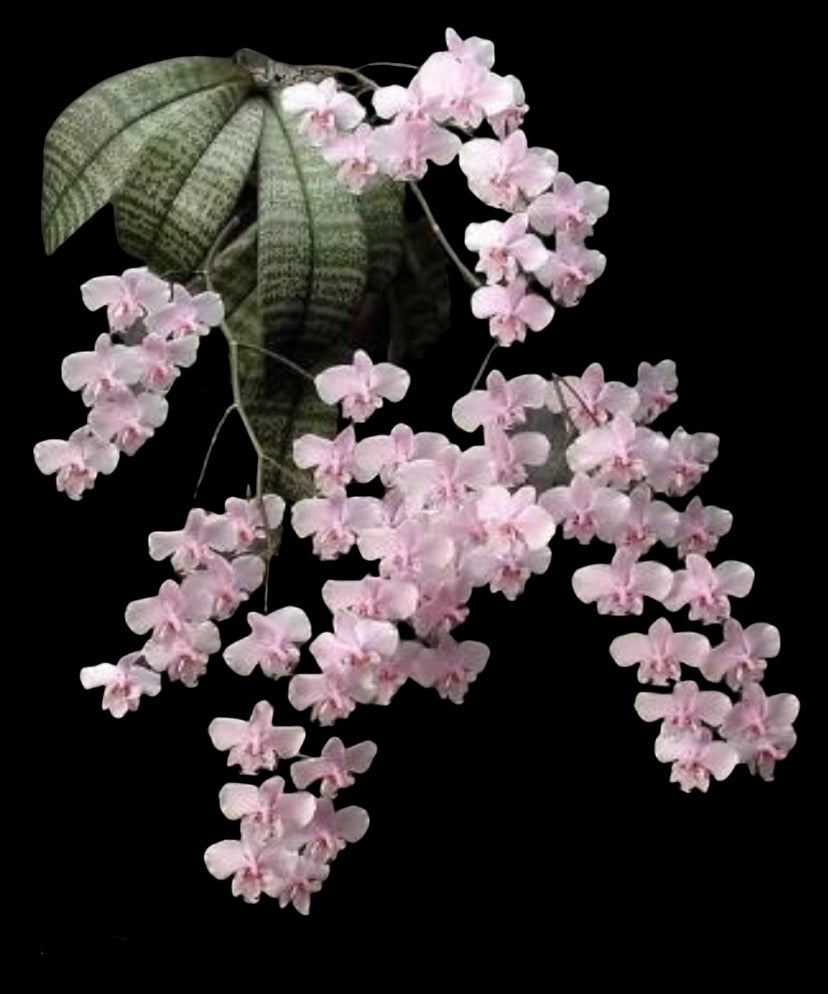
For a species orchid, Phal. schilleriana low light requirements make this a suitable species for windowsill and under-lights growers. Choices for potting media are varied and are usually selected by climate and growing conditions. Northern growers prefer a moisture-retaining mix such as peat based "mud mixes" or medium fir bark. Southern growers tend toward coarser potting media like medium fir bark or coconut husk chunks often ammended with additives: Diatomite, sponge rock or chunky peat. We use sphagnum moss in clay pots for all of our Phals here and will often add some lava rock or charcoal chunks to open it up a bit. Most growers use plastic pots because it retains moisture better but here in hot Florida we find the moisture evaporative qualities of clay may help keep roots a little cooler. If you have the luxury of space, Phaahaenopis grow nicely in hanging pots that allow the leaves to droop naturally. This also helps avoid crown rot and if you do not stake the inflorescence, it will arch naturally and make a beautiful graceful presentation.
Phalaenopsis light conditions conditions should generally be quite shady with no direct sunlight but we find that the heavily barred foliage of Phalaenopsis schilleriana and its close relative, Phal. stuartiana, seem to tolerate a little brighter conditions, especially if there is a fan nearby. Our Phals have tolerated temperatures into the 40's F but to keep plants in prime condition do not subject them to lower than 60 ° F. Cooler night temperatures in the fall, 55 ° F., are needed to initiate flower spikes. Fertilizer regimen should be the same as for your other orchids; weakly weekly and cut back to twice a month in winter.
Most Phalaenopsis are not plagued by too many pests but spider mites and soft brown scale are the most common. Household remedies such as rubbing alcohol and a soft toothbrush work well if the problem is addressed early on. See the pest and disease section of www.aos.orgregarding specific remedies for individual pests.
Flowering size not in spike yet
PLANTS ARE MOUNTED ON PLASTIC MOUNTS AND WELL ESTABLISHED.
Returns Policy
Due to the delicate nature of our orchids, all of our products may not be returned. If you're unhappy with your purchase, please contact orders@orchidclassics2u.com with your order number and reason for dissatisfaction with your order. We will do our very best to ensure you're happy with your Orchid Classics shopping experience.
Shipping
We can ship to virtually any address in the world. Note that there are restrictions on some products, and some products cannot be shipped to international destinations.
When you place an order, we will estimate shipping and delivery dates for you based on the availability of your items and the shipping options you choose. Depending on the shipping provider you choose, shipping date estimates may appear on the shipping quotes page.







